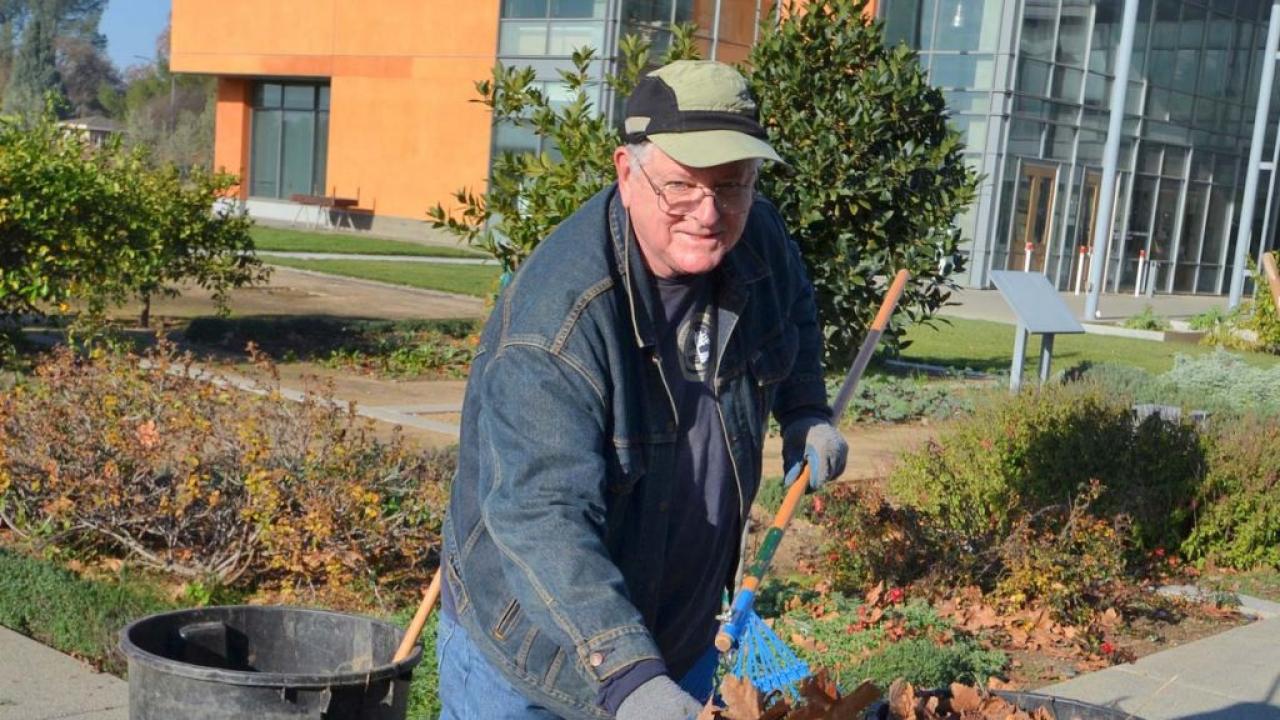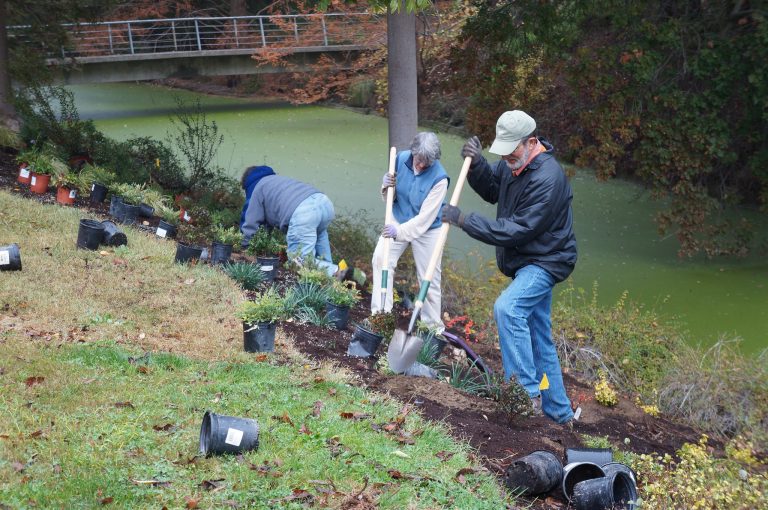
Winter gardening in northern California

by Taylor Lewis, Nursery Manager
As soon as I see the color begin changing on the trees outside, a list of jobs springs to mind. Some I won’t do at any other time of the year, some I can’t do at another time, and the rest I do because I’m out there anyway.
Just plant it!
This is a great time of year to be putting plants in the ground in whatever form you’ve got them: plants from our plant sales, seeds, or bulbs. This is also a good time to transplant that shrub, tree or perennial that’s just in the wrong place.
To prune or not to prune

Listen to your plants; this is the time of year that your plants are communicating with you. Is that plant that was spectacular over the summer or fall now looking dead? It’s probably not anything you did! Many herbaceous perennials like purple dome Michaelmas daisies (Aster ‘Purple Dome’), coneflowers (Echinacea spp.), Cascade Creek California goldenrods (Solidago californica ‘Cascade Creek’), Sedum spp., and California fuchsias (Epilobium canum) go winter dormant, so to keep things tidy in your garden, “If it’s brown, cut it to the ground.” Many herbaceous perennials will not only grow again from the base of the plant, they will put out additional growth after a nice winter nap.
This same strategy does not apply to woody perennials. Woody perennials do not need to be cut to the ground. In fact, woody perennials are rarely pruned at all this time of year. For the most part, these are the plants in your landscapes that do not die back, like trees, shrubs (Salvia, lavenders) and vines. Unless there are serious structural issues or they are scraping against your house, don’t prune them – keep them with as many leaves as possible for photosynthesizing purposes during the next light-limited months. If you do prune them, it sends a signal to the plant to grow at the same time it’s trying to go dormant. This pushes new, tender growth that’s susceptible to cold.
Leaf it be?
I suggest keeping most of your tree leaves where they are at, and not just because I don’t like raking! Leaves make excellent free mulch, help add warmth to tender plant roots, break down and once again become used by the tree they came from. If you grow roses or fruit trees, that’s the exception. Their leaves tend to harbor fungus and mold pathogens, which lie in wait until spring when warmer weather fuels their havoc. Keep the areas beneath these types of plants leaf free as much as possible.
Protect your investment
When you hear about temperatures dropping, don’t just think about the plants you have that are frost tender. Anything new in your yard may be at risk. At the nursery, we grow plants that are well-suited to our region’s USDA Zone 9 temps, but sometimes Mother Nature doesn’t play by the rules. An established plant can take the cold, it’s the newly planted ones I worry about because they don’t have the root systems to bounce back. Cold temperatures are the main reason why we lose plants over the winter. Shop your local nurseries for frost cloth or keep some old sheets on hand to cover your new garden additions should the weather get bitter.
Feast or famine
Isn’t it always a good time to provide your plants with extra nutrition? Not necessarily. The general rule for using fertilizers is to provide them during your plant’s peak growing season. Adding the popular types of fertilizers you mix with water will signal the plant to regrow; that new growth will not be as hardy and will be vulnerable to frost. Consider instead adding an organic fertilizer to slowly feed your plants over time with a broader range of required nutrients.

Miscellany
Walk your landscape and check mulch levels; now is the time to resupply those layers. Purchase or borrow a tool cleaning/sharpening kit for those rainy days when you can’t get in the garden. Watch for large rain puddles that might be a hidden basin or a patch of heavier soil that needs amending. Reprogram your irrigation timer, or simply turn it off during the rainy season, and make sure you water at least once a month if there’s no rain.
